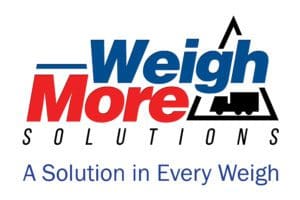Semi Truck Weight: How to Use a Weighbridge
Do you want to learn how to use a weighbridge to check for semi truck weight – Click here to learn how you can use these amazing tools!
Semi Truck Weight: Overloaded trucks are a leading cause of accidents. The cargo reduces balance, cause cargo to fall into the road, reduce emergency handling capability, and make it more difficult for drivers to break in time.
It also presents severe strain on vehicles and can cause their components to fail before their time. Overloading is the primary cause of unscheduled maintenance.
Extra weight can also become a legal liability if you exceed local mass limits. These factors and more mean that one of the most important questions drivers and their employers can ask is; how much does a truck weigh when loaded with cargo?
A weighbridge provides one of the quickest answers to this question, especially when combined with record-keeping technology. It lets everyone know how heavy a truck is at all times.
Read our guide to learn how to maintain legal semi truck weight using a weighbridge and how to choose the right option for your needs.
How to Use a Weighbridge to Weigh a Truck
A weighbridge platform is a scale that’s large enough to weigh a truck. There are several types, but most require the vehicle to drive onto it with all axles on the scale.
Weighbridges don’t work in the same way as your scale at home. They measure the weight of a truck before and after it loads, using the difference between the two to determine the weight of the load.
Weighbridge software lets you use software to automate the data collection and weight calculation. It also makes it easier to store and share the data you collect.
A weighbridge can help you obey vehicle load laws and make sure there are no product discrepancies during shipment. Keep accurate records and use technology that can access the cloud to ensure everyone has access to weight information at all times.
Semi Truck Weight Laws
There are two types of mass limits you must consider. They include GVM, a measure of total mass, and axle mass, the mass on each axle.
Calculating mass limits is one of the most complicated aspects of learning how to weigh a truck. You must factor in manufacturer recommendations, the type of vehicle, spacing between the axles, and other factors. Look into helpful resources such as the National Heavy Vehicle Regulator or Roads and Maritime Service.
There are several ways drivers and companies attempt to cheat weighbridges. They may leave an axle off the scale to decrease weight, have another driver join them to increase weight, or manipulate the readings electronically.
Penalties for Overloading Trucks
Mass limit breaches fall into 3 categories: minor, substantial, and severe. They each come with different penalties depending on how severely you’ve overloaded your vehicle beyond legal capacity and whether you have previous offences.
A minor risk breach includes overloads of less than 5% beyond legal limits. Penalties include fines of $1,100-$5,500 for the first offence and $2,200-$11,000 for all subsequent offences.
Substantial risk breaches include overloads between 5-20%. Individuals can face fines up to $2,200 for the first offence and $11,000 for all subsequent offences. Corporations can face fines of up to $4,400 for the first offence and $22,000 for all subsequent offences.
Severe risk breaches include any overload of over 20% above legal limits.
Individuals face an initial fine of $5,500 for their first offence plus an additional $550 for each percentage over 20% they overload their vehicle. Subsequent offences can lead to $11,000 plus $1,100 for each additional overload percentage.
Corporations face $27,500 plus $2,750 for each additional percentage for their first offense. The fine climbs to $55,000 plus $5,500 for each additional percentage in all subsequence offences.
Exceeding mass limits is a criminal offence. Refusing to follow the laws can leave you with legal penalties in addition to fines. These include a penalty notice for small breaches and a Court Attendance Notice for more serious issues that require you to appear before a magistrate.
The amount of fine you’ll have to pay depends on how much you overload the vehicle and several other factors. Check the National Heavy Vehicle Regulator’s website to see how much you may have to pay.
Remember that the driver and/or their employer or prime contractor, operator, consignor, packer, load manager, or loader could be held liable for overload crimes. It’s a crime that can bring down an entire organization.
How to Prevent Overloading with Accurate Measureement of Semi Truck Weight
Weighing each vehicle is the best way to ensure it’s not overloaded, but there are visual cues that can add to the information a weighbridge provides. Look for signs of overloading such as sagging rear-ends, irregular tire and brake wear, and loose, unresponsive suspension and steering.
Avoiding the penalties of overloading and fraud starts with prevention and continues by taking the correct actions. Use weighbridge security software, audit your records, weigh every vehicle before it sets off on its way, and discipline employees who disobey the rules.
How to Choose a Weighbridge
Having your own weighbridge saves you time and money by eliminating the need to go to a public weighbridge every time you need to weigh a semi.
To choose the best option, consider your available space and budget as well as material and maintenance requirements.
Surface-mounted weighbridges require more space but incur less maintenance and drainage costs than pit-mounted weighbridges.
Concrete is less susceptible to rust but can crack in freezing temperatures. Steel is another popular option with lower transportation and installation costs. Both can last up to 20 years.
Maintaining your weighbridge is an essential part of your business. If it’s out of commission, you won’t be able to continue work.
Where to Find a Weighbridge
Maintaining a legal semi truck weight is the best way to avoid serious legal and financial penalties. The best way to do this is to purchase and use your own weighbridge.
There are several customizable options available today that differ in cost, material, and size. Choose the best one for your needs so you can weigh vehicles at any job site or building.
Once you’ve chosen the right weighbridge, you need to find a quality supplier to purchase it from. Weigh-More is a provider you can trust regardless of what industry you work in. Fill out our inquiry form to get up and running today.

